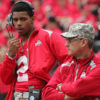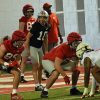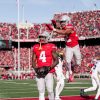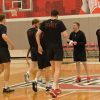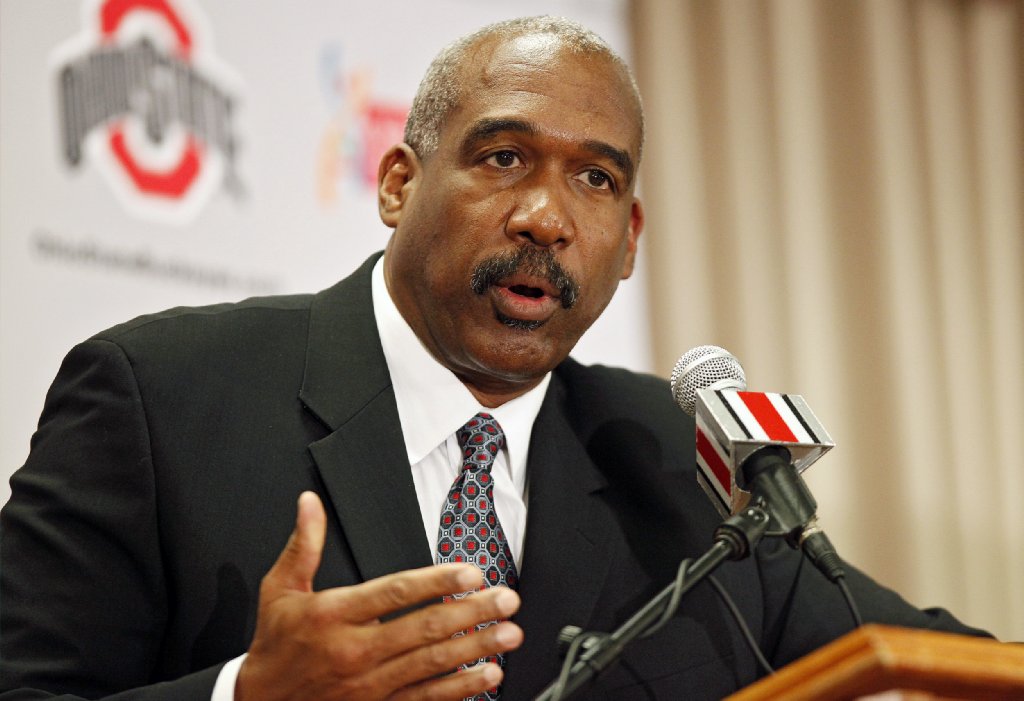
USC and UCLA shocked the college athletics world on June 30 when the schools submitted their official applications to become members of the Big Ten.
In a changing landscape that has caused many to speculate about a future of super conferences and football-only leagues, Ohio State athletic director Gene Smith and University President Kristina M. Johnson reassured the school’s Olympic sports and the addition of the Trojans and Bruins’ athletic programs was for them, too.
“USC and UCLA are storied (athletic) programs,” Johnson said. “I think the Olympic sports, and we clearly care about all these sports, I think the opportunity to compete with people that are on top of the game is huge. The distance is something we will have to figure out. We will have to figure out a structure to optimize the opportunity to compete but minimize the challenge of travel.”
Johnson said traveling for games and competitions has been an issue for national athletic programs since she was a field hockey player at Stanford in the 1970s. Her main focus as Ohio State’s president will be to continue ensuring that the university’s student-athletes receive ample resources to help them succeed in the classroom despite future cross-country flights to California.
“It’s been an issue since I was a student-athlete,” Johnson said. “There would be road games where we’d be away from two or three days having to come back and sit in an optical network and circuits final. But our student-athletes are committed to the academic mission as well. It’s something we are sensitive about, and we will continue to apply those same ideas about how the students can succeed in the classroom as well.”
As Ohio State’s director of athletics since 2005, Smith has handled travel for the school’s 36 varsity sports along with a group of support staff for 17 years. He understands the difficulties travel can cause for student-athletes and their coaches but thinks the addition of USC and UCLA won’t make things anymore complicated than they’ve been during his time in Columbus.
Still, Smith believes the Big Ten will need a calculated approach toward athletics scheduling so as not to risk the conference’s student-athletes ability to receive an education at their member school.
“Many of our teams already go west,” Smith said. “They compete against UCLA, USC, Washington or Texas. We have a lot of our Olympic sports that go out there already. We have to be very strategic to ensure we don’t put teams in (a bad place academically). Basketball will probably be the one that is the most challenging because of our television relationships. I think the Olympic sports won’t be as big as what we are thinking relative to that issue.
According to Smith, 35 of 36 sports at Ohio State ended the season with a 3.0 GPA or higher and 788 student-athletes finished with a 3.0 GPA or higher. In the 2021-22 academic year, a school-record 552 student-athletes were named to the Academic All-Big Ten team, with the majority representing Olympic sports.
“There are so many things we have to be smart about to take advantage of this relationship and not damage their unbelievable effort in the classroom, and we will be focused on that,” Smith said.
Johnson sees Ohio State’s academic success and the Big Ten’s academic achievements as a significant contributors to the addition of USC and UCLA to the conference. Without those pre-existing factors, she wouldn’t have felt as comfortable admitting the schools.
Knowing that the Buckeye programs will take their education seriously — regardless of time off the Columbus campus — makes Johnson confident the extra travel won’t adversely impact the educational process for Ohio State.
“I think we understood how game-changing this is, so it wasn’t taken lightly,” Johnson said. “The presidents had a great discussion. We think this is the best thing for our student-athletes, and we think this is the best thing for the Big Ten. The Big Ten is a fabulous athletic conference, but it’s an even greater athletic conference. This allows us to expand that reach and those connections.
“Every month, we are on a call with 14 presidents. Now that number will be 16. There will be a lot of additional opportunities to connect and enrich the opportunities for our faculties, students and staff. We understood that this was big.”



